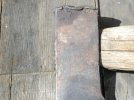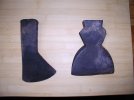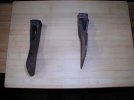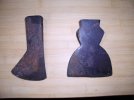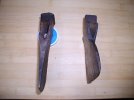- Joined
- Jul 8, 2014
- Messages
- 558
So the Ardex head is out of the vinegar. When I peeked at it yesterday, I couldn't see the tempered section (sorry, don't know the technical name yet). I was looking at about an inch from the edge. Today, I took it out of the vinegar and was impressed by the size of the tempered section. Then I thought, I should ask the masters on this forum if that is a good thing or not? Does it indicate anything in particular? A modern feature? Poor axe construction? A fantastic sign of an axe that will be useful, basically for ever?



